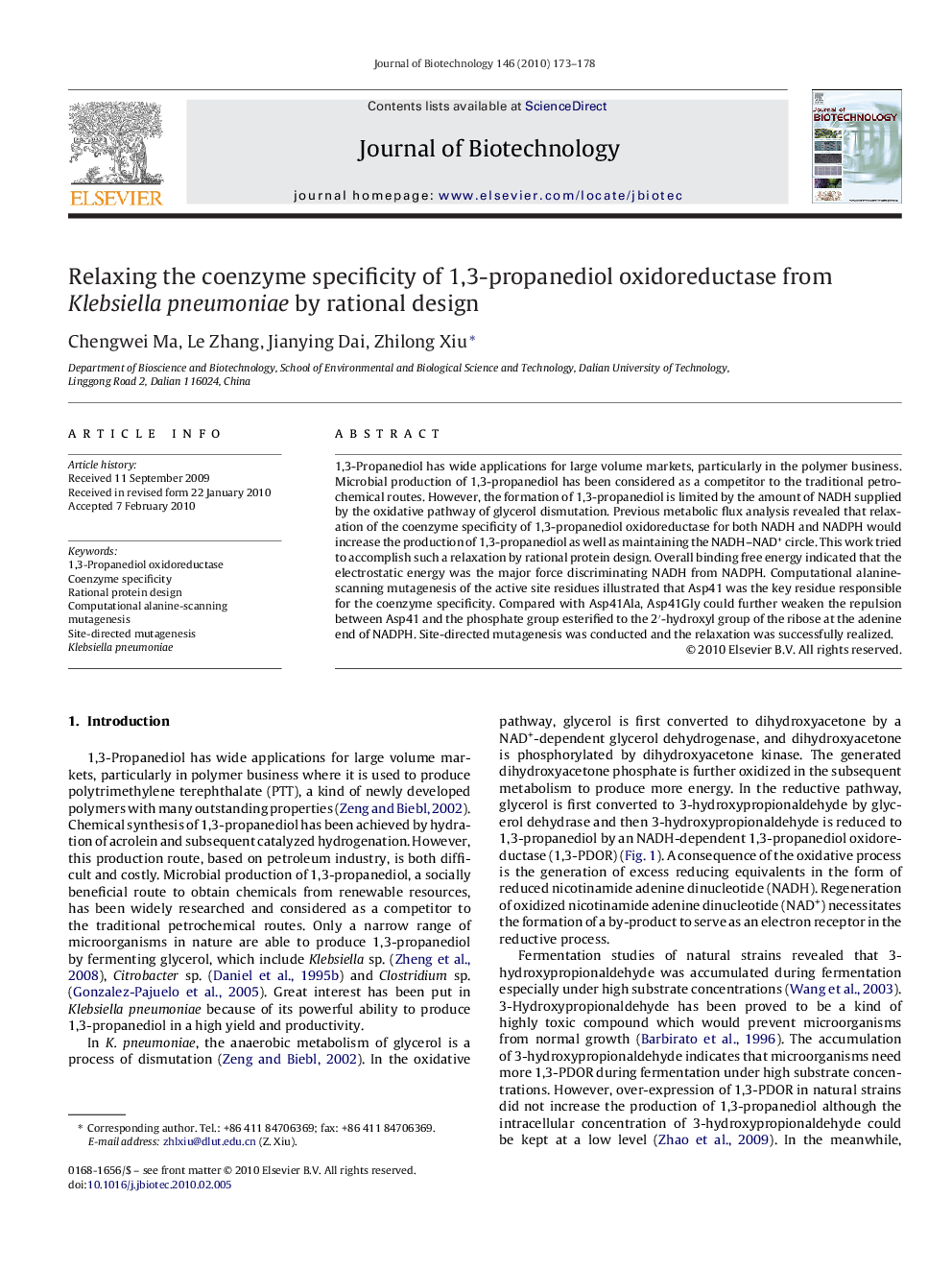| Article ID | Journal | Published Year | Pages | File Type |
|---|---|---|---|---|
| 24386 | Journal of Biotechnology | 2010 | 6 Pages |
1,3-Propanediol has wide applications for large volume markets, particularly in the polymer business. Microbial production of 1,3-propanediol has been considered as a competitor to the traditional petrochemical routes. However, the formation of 1,3-propanediol is limited by the amount of NADH supplied by the oxidative pathway of glycerol dismutation. Previous metabolic flux analysis revealed that relaxation of the coenzyme specificity of 1,3-propanediol oxidoreductase for both NADH and NADPH would increase the production of 1,3-propanediol as well as maintaining the NADH–NAD+ circle. This work tried to accomplish such a relaxation by rational protein design. Overall binding free energy indicated that the electrostatic energy was the major force discriminating NADH from NADPH. Computational alanine-scanning mutagenesis of the active site residues illustrated that Asp41 was the key residue responsible for the coenzyme specificity. Compared with Asp41Ala, Asp41Gly could further weaken the repulsion between Asp41 and the phosphate group esterified to the 2′-hydroxyl group of the ribose at the adenine end of NADPH. Site-directed mutagenesis was conducted and the relaxation was successfully realized.
